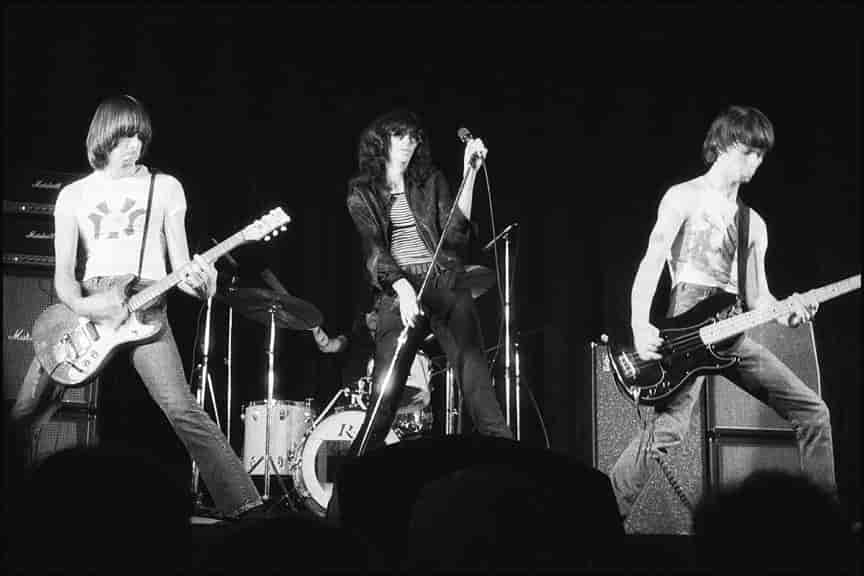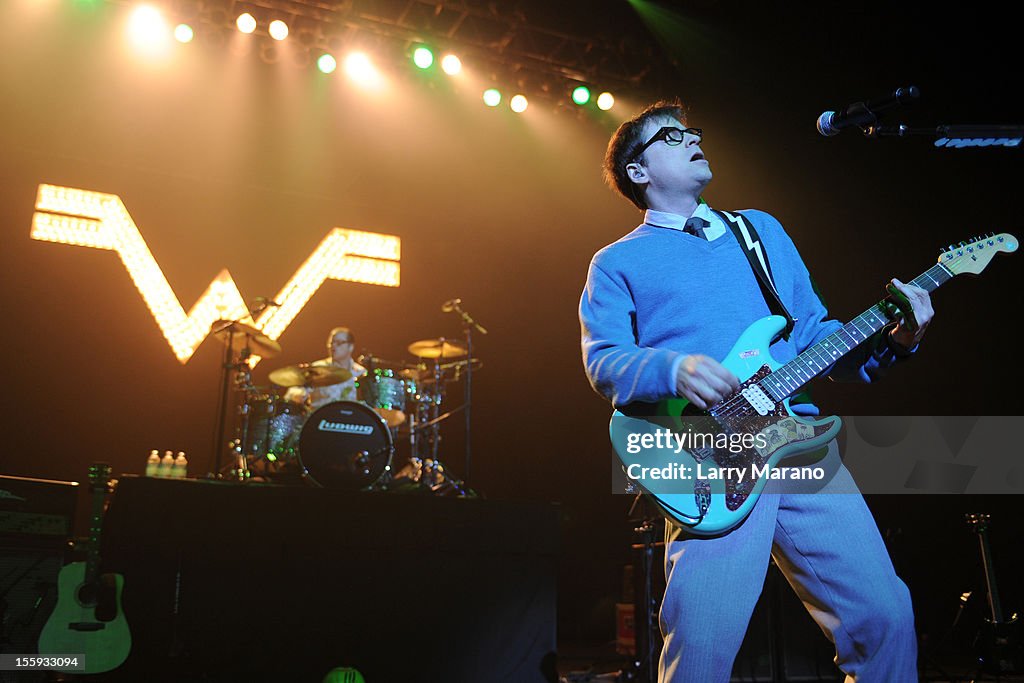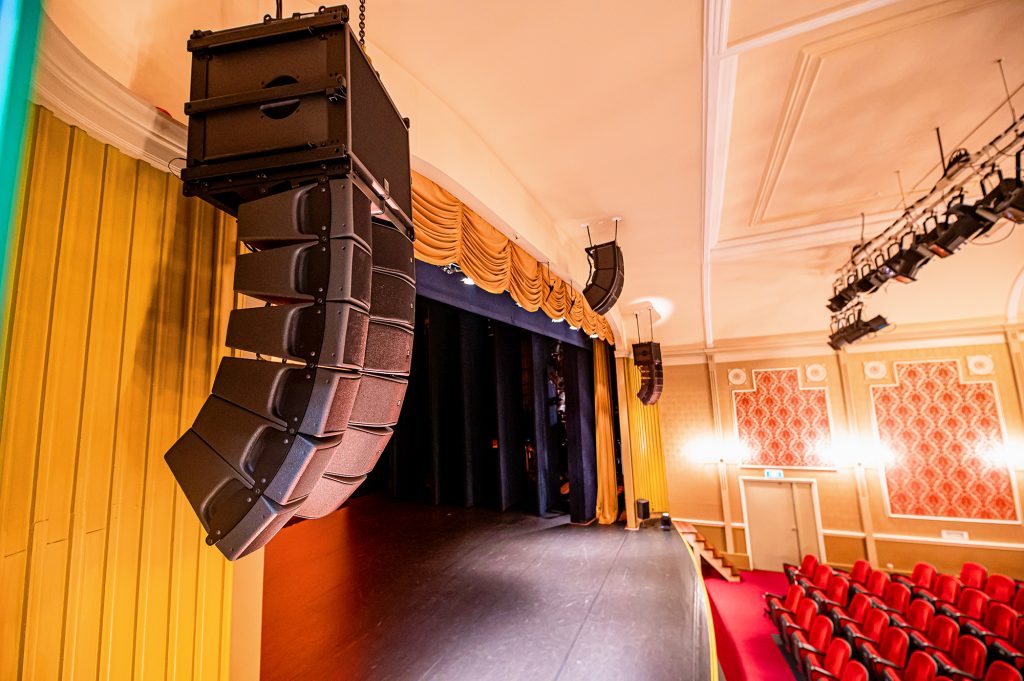The Advent of Professional Sound Systems in Rock and Roll The Advent of Professional Sound Systems in Rock and Roll...
While amplified sound has existed since the late 19th century, the development of what we recognize today as modern professional sound systems didn’t truly take shape until the mid-20th century.
Before bands like the Beatles hit the scene, concerts were mostly held in smaller venues. The sound was naturally contained, and everyone had a decent listening experience. But as rock and roll’s popularity exploded, bands started playing in stadiums and massive outdoor spaces. This burgeoning rock and roll scene in the 1950s and 60s demanded louder and more powerful sound systems to cater to larger audiences and outdoor venues. They relied on repurposed public address systems, or as industry jargon would have it, PA systems. However, these PA systems proved inadequate for high-energy music.
The Beatles themselves quit touring partly because of this technological limitation. They couldn’t hear themselves play, and neither could the audience.
Pioneers of Professional Sound Systems
The early pioneers and innovators of the professional sound system actually came on the scene much earlier than the “Long Live Rock and Roll” era. In the early 20th century, Edwin Pridham and Peter Jensen weren’t just tinkering in a small California lab. They were igniting a sonic revolution. Driven by curiosity, they experimented with microphones, amplifiers, and loudspeakers. They were pushing the boundaries of how far the human voice could travel. Their experiments bewildered locals, who’d hear disembodied voices echoing through their homes like ghosts.
This led them to create Magnavox (Latin for “Great Voice”). And in 1915, they unveiled their groundbreaking PA speakers system at a Christmas carol concert in San Francisco. 100,000 people gathered in the city’s Civic Center, awestruck as crystal-clear carols seemingly emanated from the very walls. This marked the dawn of amplified public performance. They paved the way for companies like Marconi, Tannoy, Altec, and Western Electric to further develop PA systems for radio, telecommunications, and cinema.
But the journey didn’t stop there. Decades later, Charlie Watkins of Watkins Electric Music picked up the torch. He revolutionized live sound with his innovative amplifier designs that focused on enhanced frequency response. He ensured that music reached audiences with clarity and power, laying the foundation for the immersive concert experiences we enjoy today. Then, Bill Hanley, often called “the father of festival sound,” experimented with custom-built PA systems. He was dissatisfied with the limitations of existing technology and designed his own speaker boxes. Most notably for the 1965 Newport Folk Festival, where Bob Dylan controversially went electric.
In the 1970s, the Grateful Dead’s “Wall of Sound” emerged as a pioneering force in the sonic revolution. This massive professional sound system, a brainchild of the band’s sound engineer, Owsley Stanley, was far from just a loud stack of speakers. It was a carefully crafted system designed to address the challenges of large-scale live music performances. Stanley’s vision was clear. He wanted to create a distortion-free, high-fidelity sound that could reach every corner of the audience. Regardless of the venue’s size or shape.

Professional Sound System Breakthroughs
Despite its revolutionary impact on live music, the Wall of Sound had some significant downsides. Its sheer size and complexity made it a logistical nightmare. It required multiple trucks and a large crew to transport and set up. The cost of building and maintaining this massive system was also prohibitive. Additionally, the Wall of Sound’s immense power caused sound to bleed into surrounding areas, making it unsuitable for many venues. Finally, the system had a limited “sweet spot” where the sound was optimal. It made it difficult to achieve consistent sound quality throughout the venue.
The roar of rock and roll demanded more than just enthusiastic musicians and the “Wall of Sound.” It needed a technological revolution to truly unleash the grit and power of the rock scene. Those early concerts were plagued by inadequate sound systems. They struggled to project the raw energy of this new music to growing crowds. This sparked a wave of innovation. Engineers like Bill Hanley, already mentioned, crafted those custom speaker cabinets and pushed the boundaries of amplification.
Then there was Dr. Christian Heil, a physicist with a passion for both science and music, who attended a Pink Floyd concert and sparked a sonic revolution. Heil truly transformed the landscape of live sound in the 1990s with his groundbreaking invention, the line array speaker system, which revolutionized how sound is delivered. Imagine sound waves behaving like laser beams, focused and directed with precision to reach every corner of a venue. This ingenious technology, born from Dr. Heil’s relentless pursuit of audio perfection, allowed concert sound to travel further with crystal-clear clarity. It ensured that every fan, from the front row to the back of the field, experienced the music as the artist intended. At L-Acoustics, we are proud to carry on Dr. Heil’s legacy, constantly innovating and refining our line array technology to create unforgettable sonic experiences for audiences worldwide.

The Demand for Higher Fidelity
As audiences grew more discerning, the demand for higher-fidelity sound increased. This led to advancements in speaker design, equalization techniques, and the development of dedicated monitor systems for performers.
The advent of digital signal processing (DSP) in the late 20th century brought significant improvements in sound quality, control, and flexibility. Digital mixers, amplifiers, and effects processors became commonplace, offering greater precision and a wider range of options for sound engineers.
The Impact
The development of professional sound systems has had a profound impact on the music industry and live entertainment. It has enabled artists to reach larger audiences, enhanced the concert experience for fans, and facilitated the growth of music festivals and large-scale events. Today, professional sound systems continue to evolve, incorporating cutting-edge technologies to deliver immersive and high-quality audio experiences.
The L Series: Revolutionizing Live Rock and Roll Sound
In today’s rock and roll landscape, the L Series line source array is redefining what’s possible in live sound. Designed with precision and versatility, the L Series delivers unparalleled power and clarity, ensuring every guitar riff, drumbeat, and vocal nuance reaches audiences exactly as intended. It embodies the culmination of decades of innovative sound engineering, offering a compact, scalable solution that tackles the challenges of modern live performances. Whether in intimate venues or sprawling stadiums, it creates a truly engaging live sound experience, setting a new standard for professional sound systems in rock and roll.
